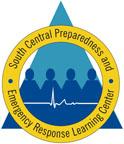
Introduction to Human Health Risk Assessment
Course Description:
This course presents the basic principles of qualitative health risk assessment of environmental chemicals, including an overview of the qualitative skills necessary to evaluate the probability of injury, disease or death in the general population from exposure to environmental contamination. It will also emphasize the qualitative aspects of hazard identification, exposure assessment, dose-response evaluation and risk characterization. Lastly, the course will address issues in risk management and communication.
Target Audience
Academic Faculty/Staff, Federal Government Employees, State Government Employees, Local Government Employees, Non-Government Employees and Students
Learning Objectives
- Differentiate between risk assessment, risk management and risk communication
- Describe the process by which experts elicit the hazardous nature of a substance
- Compare and contrast hazard identification for carcinogens and systemic toxicants
- Define dose, and differentiate it from environmental concentration and environmental exposures
- Compare and contrast the assumptions for dose-response evaluation for carcinogens and systemic toxicants
- List some key variables that exposure assessors use to quantify or qualify exposures
- Describe at least 3 different methods of acquiring exposure information
- Outline the various interests and inputs that a risk manager must assess and synthesize in order to make a risk decision
- Describe how public perception of risk may determine the extent to which they receive and understand risk communication messages
Instructor:

Amy Vinturella Lafreniere, MS, SCD
Available Credit
- 2.00 Participation/CETulane Professional and Continuing Education (PaCE) awards 2.00 hour(s) of credit for completing Introduction to Human Health Risk Assessment
Price
Required Hardware/software
System Settings
This course is designed to work most effectively if your computer and internet connection meet certain minimal requirements. This course can be accessed using a Windows 10 PC or a Mac with High Sierra1, Mojave, or Catalina. Pop-up blockers should be disabled when viewing the course. Internet Explorer 11 (for Windows 10), or the current version of Google Chrome, Mozilla Firefox, or Apple Safari (for Windows 10 and or Mac) is required. Many of our courses require Java and JavaScript enabled.
Links to External Websites
Links to websites outside this course will open in a new window or tab. Some browsers may minimize the course window. If this occurs, maximize the course window to return to the course.
Adobe Acrobat Reader (for desktops and laptops)
Adobe Acrobat Reader is required to access some documents in this course. If you need to download a free copy of Acrobat Reader, click here.
Internet Connection Speed
A minimum download speed of 1.5 Mbps is recommended for an optimal experience, which is commonly the speed associated with a basic DSL or a cellular/satellite connection. A faster connection, such as cable or fiber service, with further enhance your online experience. A Wi-Fi connection is generally acceptable, but it is dependent upon one of the two services mentioned above. You can check your internet connection speed at http://www.speedtest.net/.

 Facebook
Facebook X
X LinkedIn
LinkedIn Forward
Forward